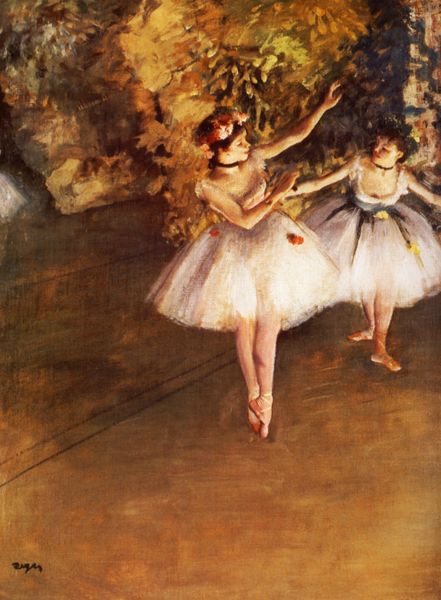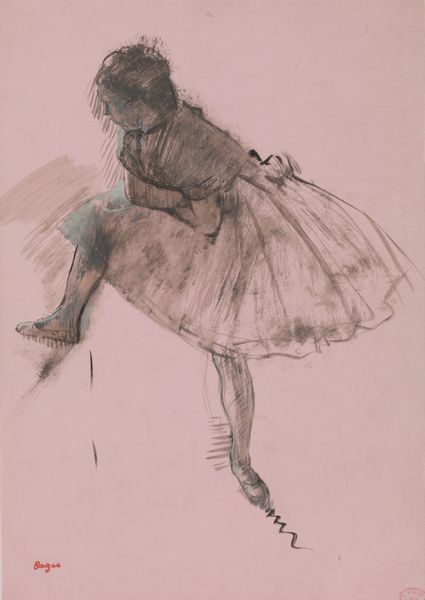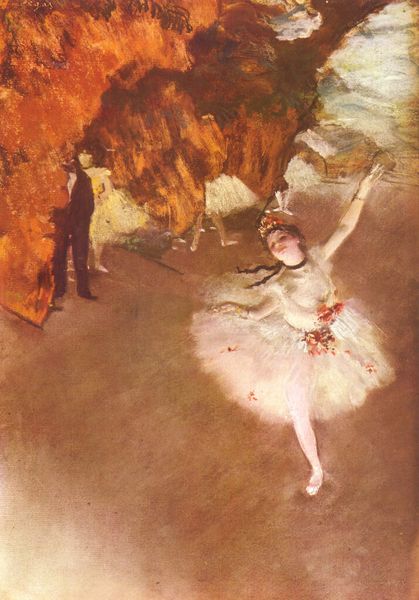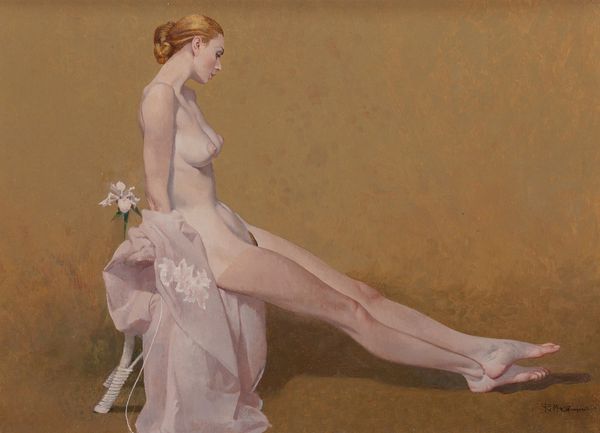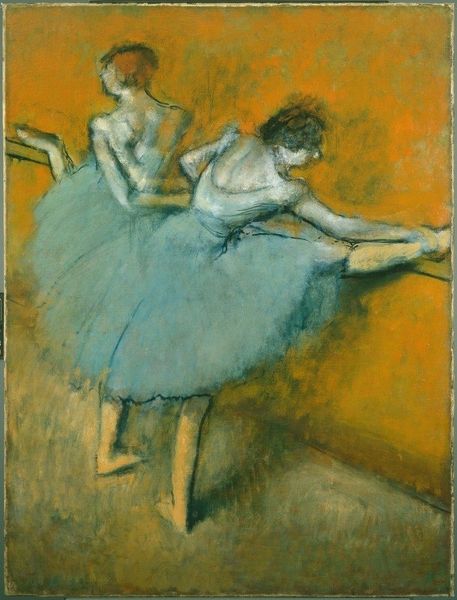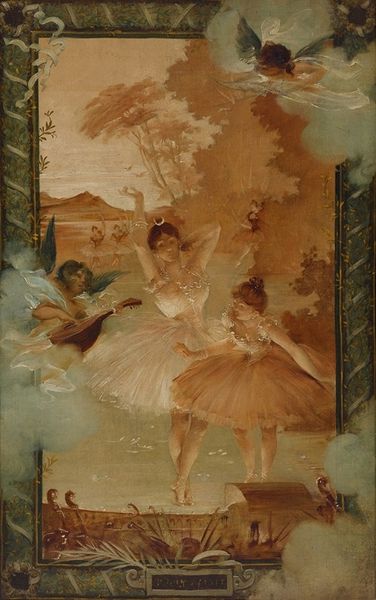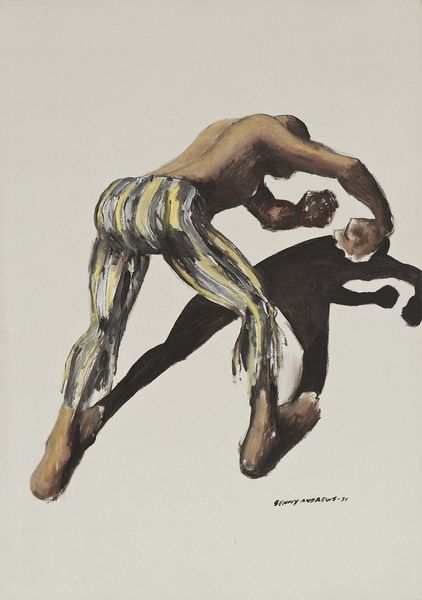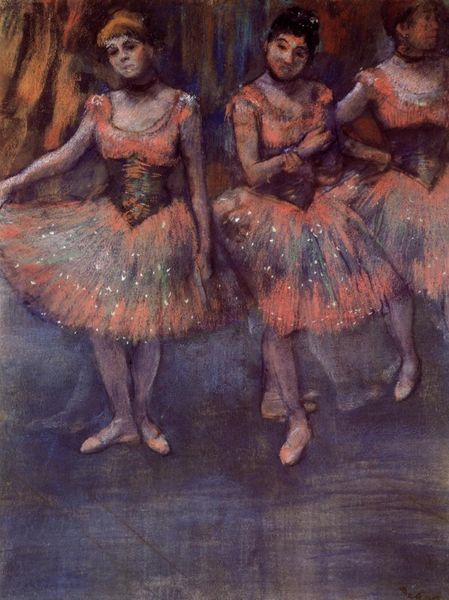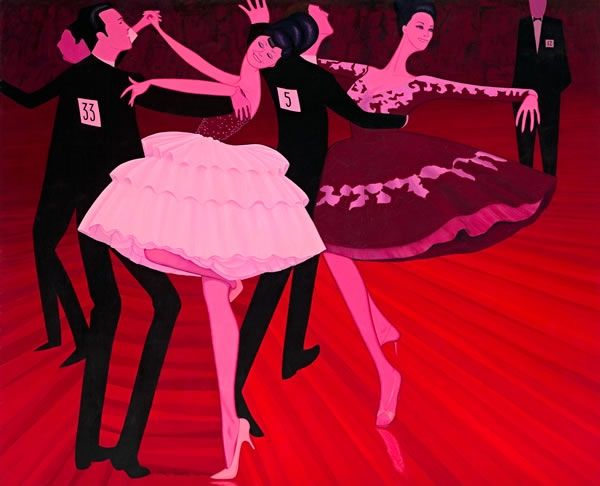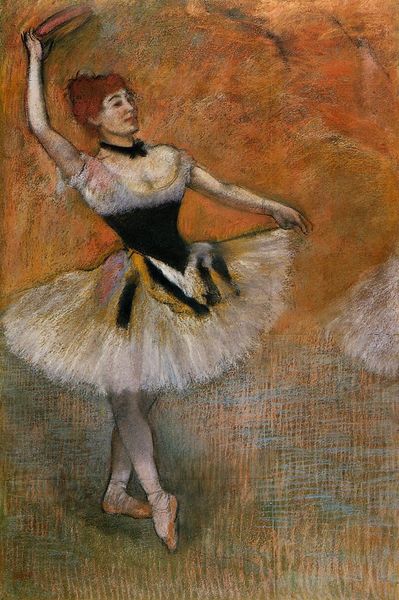
painting, oil-paint
#
portrait
#
narrative-art
#
painting
#
oil-paint
#
figuration
#
modernism
Copyright: Constantin Piliuta,Fair Use
Editor: Here we have Constantin Piliuta’s painting, "Flamenco", made with oil paint. It is so simple in its forms. The lines are elongated. I’m really drawn to the composition of the two figures intertwined in movement. What do you see in this piece, formally? Curator: Indeed, the charm of "Flamenco" lies in its deft orchestration of line and form. Note how the artist eschews realistic detail, instead opting for a highly stylized rendering of the dancers. This is especially visible in the geometric simplicity of their limbs and the almost calligraphic quality of their outlines. Editor: The male dancer appears like a dark shadow compared to the female one. Curator: Precisely. The artist employs a deliberate contrast in the chromatic values: the darker figure serving as a counterpoint to the lighter, more vibrant one. Observe how this contrast underscores the dynamic tension inherent in the dance itself, as if one cannot exist without the other. Editor: So, it’s the formal contrast that emphasizes the narrative of connection and opposition? Curator: Absolutely. Furthermore, consider how the negative space around the figures contributes to the overall sense of movement and energy. The emptiness is not merely a void; it's an active element that shapes our perception of the dancers’ dynamism. Without the white backdrop, the contrast would diminish. Editor: This focus on form really does reveal layers I hadn’t considered initially. I will pay more attention to contrast! Curator: It opens the work! A concentration on the structure of shapes can illuminate what the subject depicts, whether a dancer, a dance, or a mood.
Comments
No comments
Be the first to comment and join the conversation on the ultimate creative platform.


